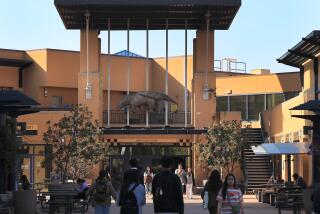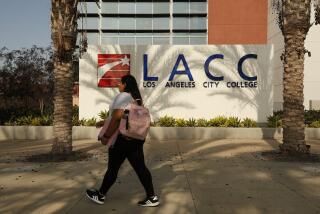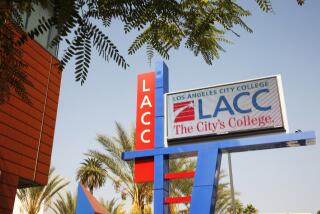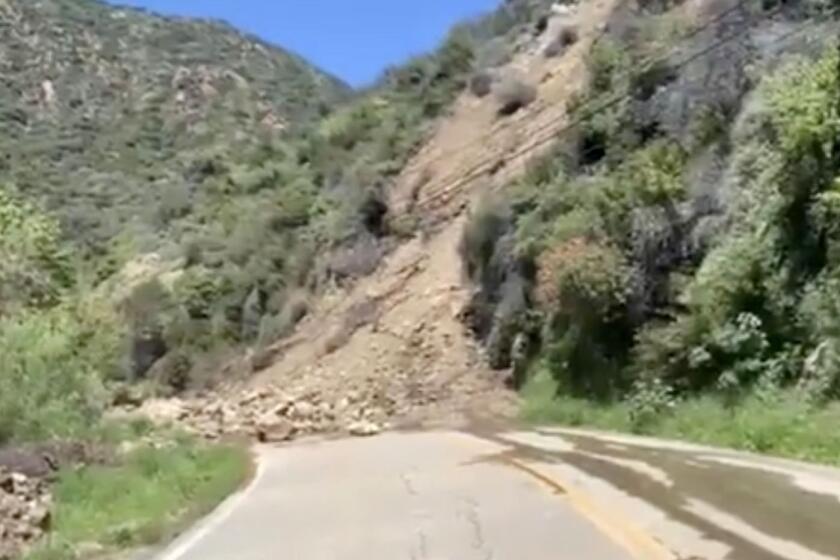For many community college students, a full summer
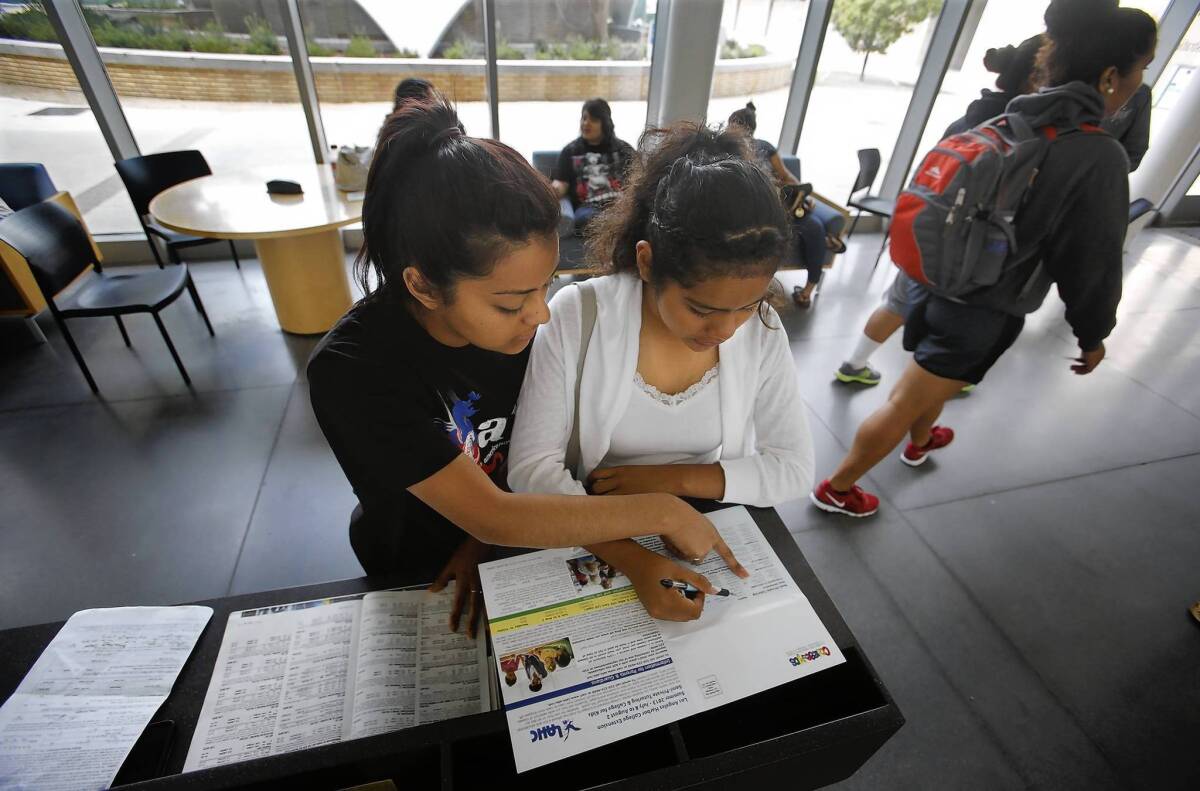
For the first time in three summers, Los Angeles Harbor College bustled last week with the activity of students on the go.
Community college students hoping to speed transfer to four-year schools; UC and Cal State students looking to fulfill lower-division science and math requirements on the cheap; recent high school graduates seeking to jump-start their college education.
An algebra class was packed, and Harbor student Angie Velasquez said she was lucky to get in. Taking the summer class may shave an entire semester from the time it takes for the biology major to transfer to UC or Cal State.
“I need to get through all of my algebra classes to get to the higher levels of math,” said Velasquez, 25. “This is going to help me to transfer much faster, maybe next year.”
It was the same story around the state, as many of California’s 112 community colleges restored or ramped up summer sessions after years of budget-forced cutbacks. But it is not just about getting students in the door.
It’s also about getting them out the door.
With lawmakers and public sentiment geared toward speeding graduation and transfer, many programs this summer are more carefully planned to offer high-demand “bottleneck” courses.
Many campuses are offering back-to-back sessions with different start dates to accommodate a diverse mix of students — recent high school graduates, UC students, veterans and others. And after years of being unable to meet demand, many colleges are having to get the message to students that classes are back and have amped up marketing of their programs.
“Colleges are being much more strategic about summer offerings, and that will carry through into the regular terms,” said Brice W. Harris, chancellor of the statewide system. “The denial of access that happened over the last several years, especially in critical core courses … means that as they rebuild schedules they’re going to start from the core and work out.”
A recent survey of the state’s 112 community colleges conducted by Harris’ office found that 67% of the respondents planned to increase course offerings; only 10% planned a decrease.
Of the 70 colleges that participated, only three said they would not offer summer session this year.
The increase is largely due to the passage of Proposition 30, Gov. Jerry Brown’s measure to temporarily increase state sales tax and income tax on the wealthy to fund education. Community colleges received about $210 million in additional funding in 2012-13.
Chaffey College in Rancho Cucamonga is increasing classes by a whopping 588%, from 80 last year to 550 courses this summer. Grossmont College in El Cajon is going from 24 classes in 2012 to 150 — a 525% increase.
Fullerton College offered about 214 classes last summer and is offering 560 this year, the largest summer session in its history. The campus conducted an aggressive marketing campaign with radio and newspaper ads and visits to high school campuses.
It is also offering three sessions with different start dates to offer lab classes that require eight rather than five weeks and to accommodate the spring schedules of university students and high school graduates.
The back-to-back sessions will also allow students to take a sequence of classes — for example, Economics 101 immediately followed by Econ 102.
Colleges are especially eager to increase enrollment of recent high school graduates, many of whom were shut out during recent years because they didn’t have registration priority — which is given to those who have already earned credits and to other groups.
“The thing we had to think about is how do we open the door for the right-out-of-high-school student, and the best way to do that is to help those continuing students finish so they can move on and have someone take their place,” said Terry Giugni, vice president of instruction at Fullerton.
Pasadena City College is increasing credit sections from 199 last year to nearly 500 this summer, and biology major David Melara said that, generally, it was much easier to get classes when he registered recently.
“I wanted to take a chemistry class, and there was only one section, but for most classes I saw a lot more,” said Melara, 19, who was able to enroll in calculus. “Just in general I think this year is going to be better. Last year was pretty grim.”
The Harbor College summer session is modest — only 80 classes, but that number is expected to double next summer, said college President Marvin Martinez. (The school offered several noncredit courses last summer.)
“Research indicates that when students are able to come to college year-round, they graduate faster than when you’re just offering fall and spring terms,” Martinez said.
The Wilmington campus is also gearing up to offer its first winter session since 2009, he said.
Students such as Abraham Mata, meanwhile, were scrambling to crash classes after years of sitting out the summer term. Mata got into a sociology class but was one of 16 students on a standby list for Spanish 1, which will fulfill the language requirement he needs to transfer to UC Berkeley or UCLA.
“I live in Wilmington, and for people in this community to be able to have summer classes here makes it a lot more convenient,” Mata said.
In the 23-campus California State University system, summer enrollment fell from 75,000 in 2009 to about 12,000 in 2010. The number increased to about 20,000 in 2011 and is probably about the same this year, officials said. Most Cal State campuses now require students to pay the full costs of instruction for summer classes, rather than using state funds to subsidize a portion.
The University of California in the past has used state funds to maintain summer enrollment. In 2011, nearly 78,000 students were enrolled; no numbers were available for this year.
More to Read
Start your day right
Sign up for Essential California for news, features and recommendations from the L.A. Times and beyond in your inbox six days a week.
You may occasionally receive promotional content from the Los Angeles Times.
